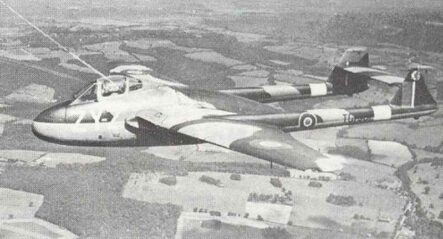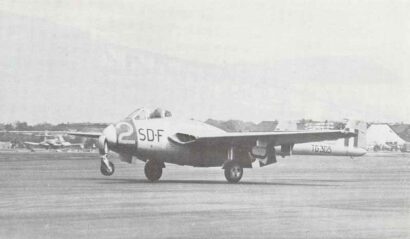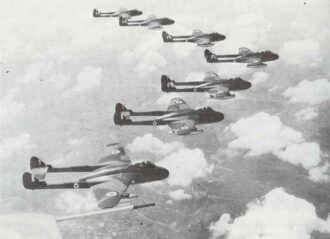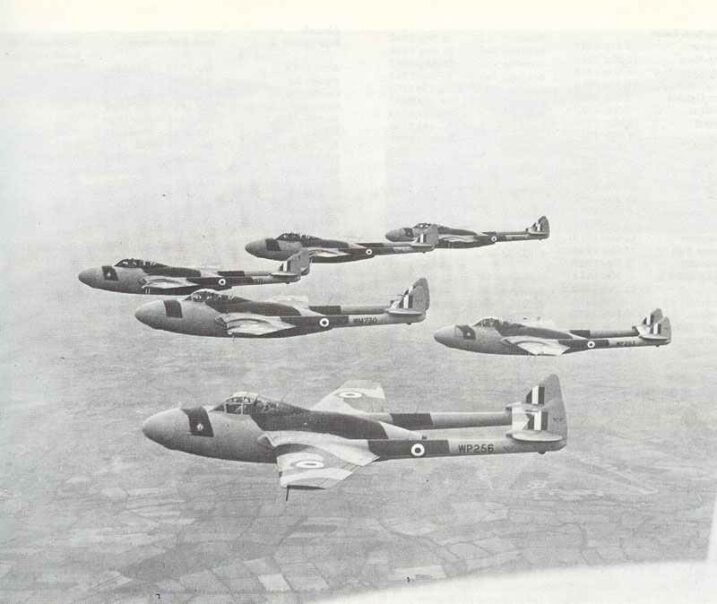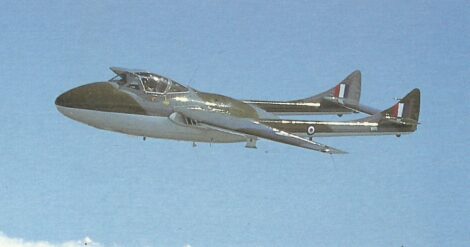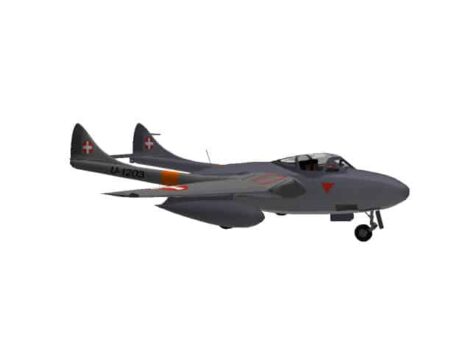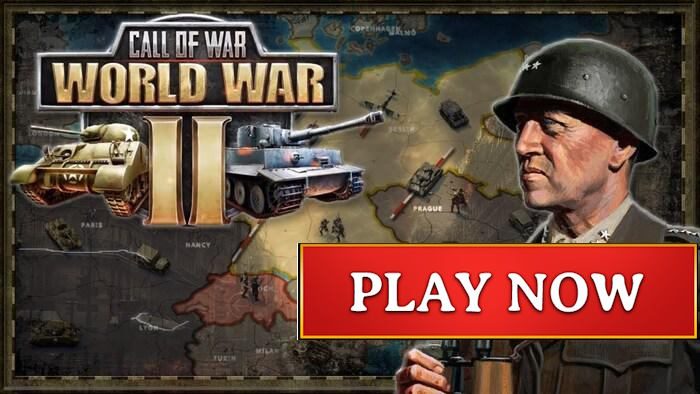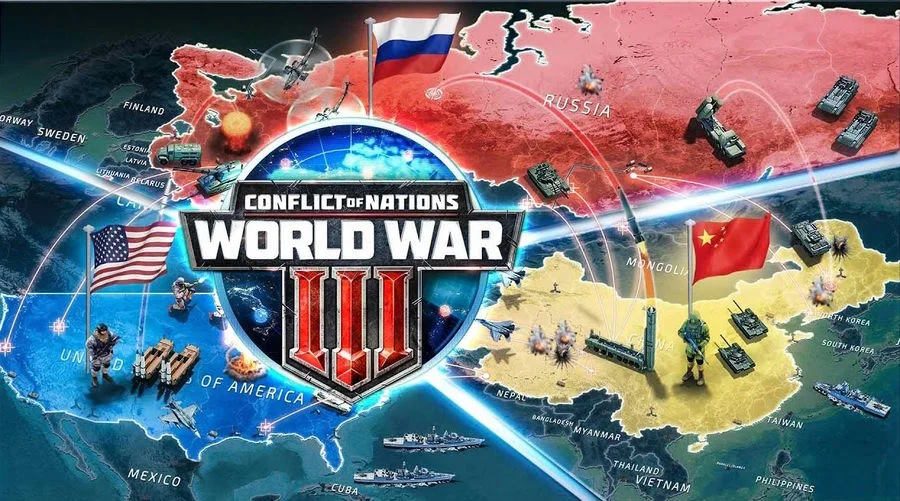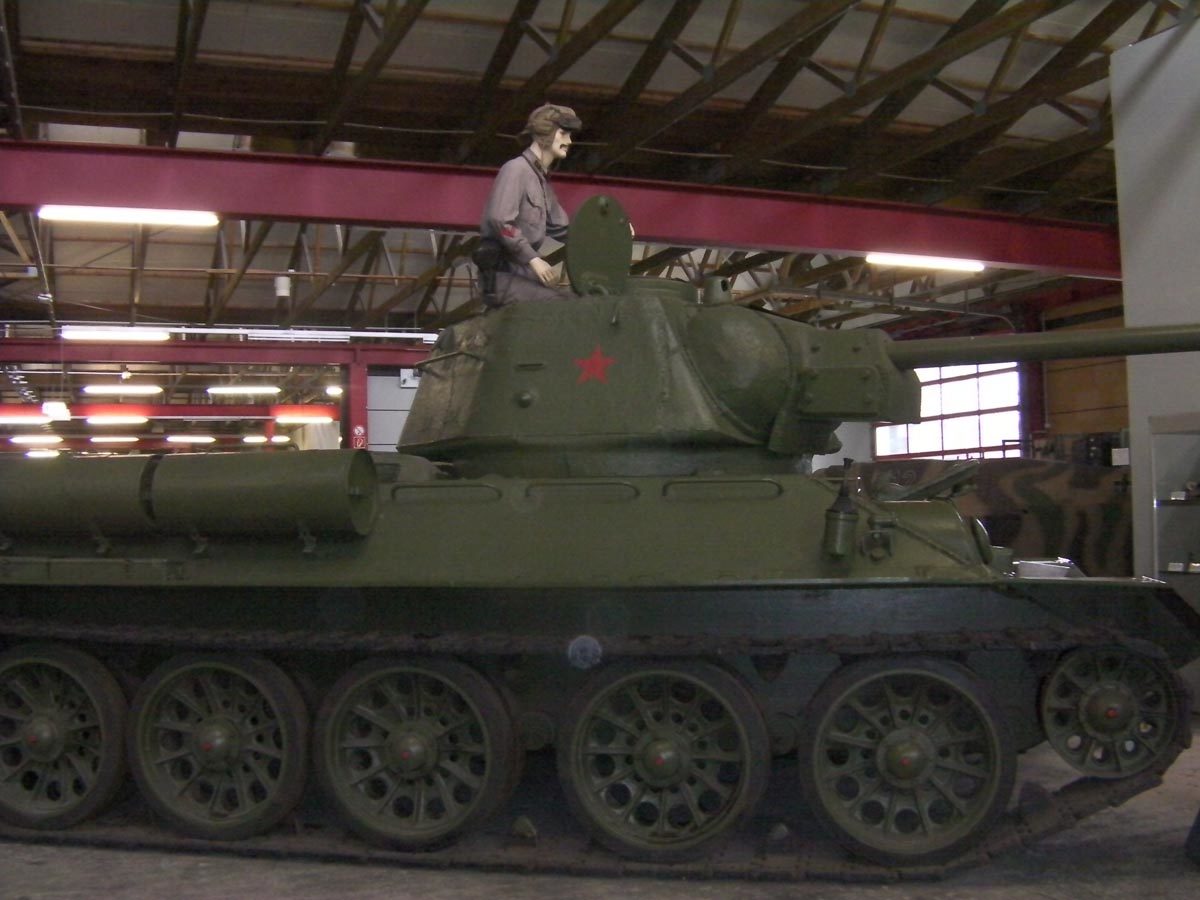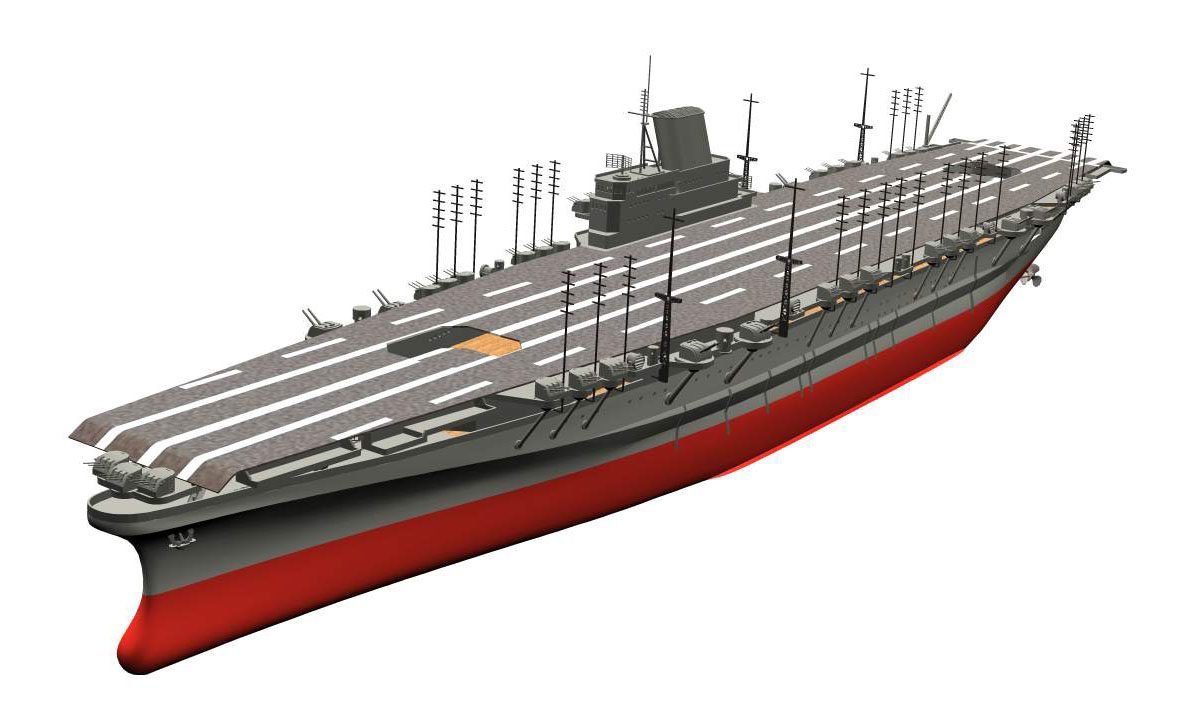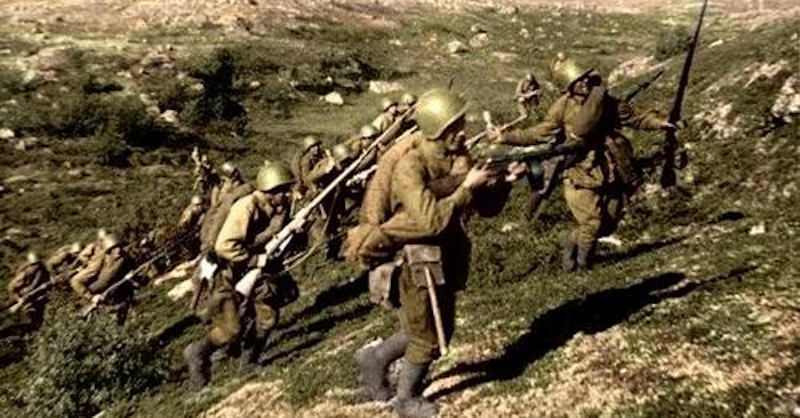British jet fighter plane De Havilland Vampire DH 100.
History, development, service, specifications, pictures and 3D model.
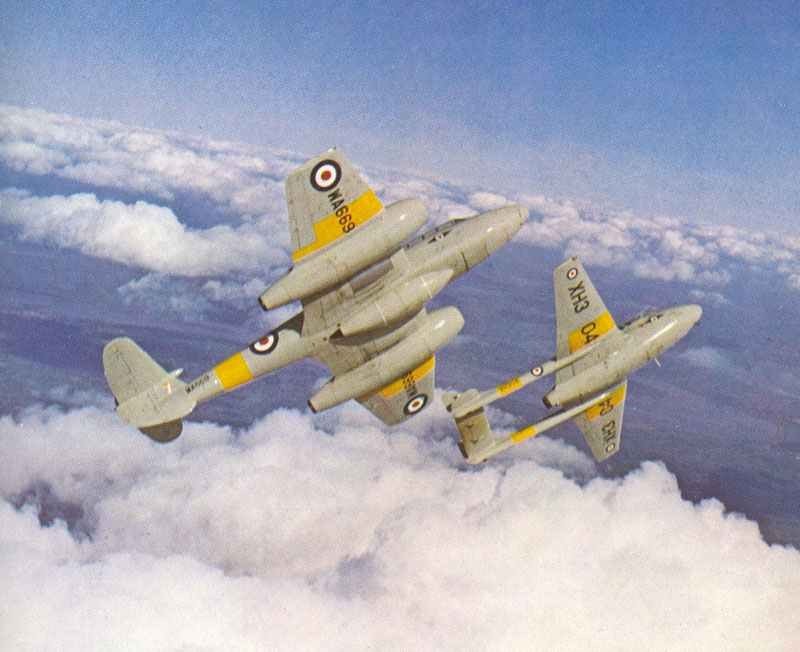
De Havilland Vampire DH 100
Table of Contents
De Havilland Vampire DH 100
Type: British jet fighter planes.
The de Havilland DH 100 Vampire was a British jet fighter developed during World War II and used extensively in the post-war era. It was the second jet fighter to enter service with the Royal Air Force (RAF), following the Gloster Meteor.
Key Characteristics
– First flight: September 20, 1943
– Introduction: 1946
– Role: Fighter and fighter-bomber
– Notable design: Twin-boom configuration with a single engine housed in the central fuselage
– Engine: de Havilland Goblin turbojet
– Wingspan: Approximately 38 feet (11.6 meters)
– Maximum speed: Around 540 mph (870 km/h)
Historical Significance
The Vampire was significant as one of the first operational jet fighters and helped establish jet aviation in many air forces worldwide. It was exported to numerous countries and built under license in several nations including Switzerland, France, and Australia.
Variants
Multiple variants were produced including:
– Single-seat fighters
– Two-seat night fighters
– Ground attack versions
– Naval variants (Sea Vampire)
– Training aircraft
The Vampire served with distinction until the late 1950s in the RAF, though some air forces continued using them into the 1970s.
History
The de Havilland Vampire was the first true design for a British jet fighter plane. That demanded a completely new classification of the individual assemblies to each other.
Frank Halford had designed a jet engine, called H 1 and later Goblin, with a thrust of about 2,530 lb (ca. 1,148 kg). The aircraft designers found this sufficient for a small fighter with one engine. They constructed a short torso, where the pressure cabins was in front of the engine. The tail was carried by two thin legs and the horizontal stabilizer was above the exhaust jet.
The prototype was the first Allied aircraft which reached 500 mph (ca. 805 km/h), but the first production aircraft didn’t reach the squadrons during WW2. Because the De Havilland company had no free capacities, these were built by English Electric.
This first jet fighters were replaced by the F 3, with a typical DH-tail, lowered horizontal tail and more fuel capacity. The FB 5 had straight winged ends with wing rackets, and the FB 6 was an export model which was built in Switzerland.
There were a huge range of export models, such as the Australian FB 30 with Nene engine and air entrance on the body, or the French Mistral SNCASE with Hispano Nene engine and enlarged air entrances at the wing roots.
The final version of the RAF was the tropicalized FB 9. Also, a Sea Vampire F 20 was built in small numbers.
The total production figure, including all variants, amounted to 4,206 – more than any other British post-war aircraft.
Animated 3D model de Havilland Vampire, Swiss Air Force
Specifications de Havilland DH 100 Vampire F1
Specifications:
DH 100 Vampire F1 | Specification |
|---|---|
Type | British jet fighter planes |
Power plant | 1 x 3,124 lb (1,420 kg) thrust de Havilland Goblin turbojet engine |
Accommodation | 1 |
Wing span | 40 ft (12.19 m) |
Length overall | 30 ft 8.9 in (9.37 m) |
Height overall | 8 ft 10.3 in (2.70 m) |
Weight empty | 6,380 lb (2,890 kg) |
Weight loaded | 8,587 lb (3,890 kg) |
Maximum speed | 540 mph (869 km/hr) |
Initial climb | 4,200 ft / min. (1,280 m/min) |
Service ceiling | 41,000 ft (12,500 m) |
Range | 730 miles (1,175 km) |
Armament:
DH 100 Vampire F1 | Specification |
|---|---|
in front | 4 x 20 mm Hispano (150 rounds per gun) |
under wing racks | 2 x 1,000 lb (450 kg) bombs or 8 x 60 lb (27 kg) rockets (for fighter-bomber F6) |
Service statistics:
DH 100 Vampire F1 | figures |
|---|---|
First flight | 20 September 1943 |
Production start | 20 April 1945 |
Service delivery | December 1945 |
Final delivery from British production | December 1953 |
Total production figure (all) | 4,206 |
References and literature
Combat Aircraft of World War II (Bill Gunston)
Technik und Einsatz der Kampfflugzeuge vom 1. Weltkrieg bis heute (Ian Parsons)
Das große Buch der Luftkämpfe (Ian Parsons)
Luftkrieg (Piekalkiewicz)
The Squadrons of the Royal Air Force (James J. Halley)
Düsen-Kampfflugzeuge (David A. Anderton, John Batchelor)
Militärflugzeuge der Gegenwart aus aller Welt (Buch und Zeit Verlagsgesellschaft mbH, Köln)
Technik und Einsatz der Kampfflugzeuge vom 1. Weltkrieg bis heute (Ian Parsons)


